
Dong-gu: The Heartbeat of Gwangju
Discover Dong-gu in Gwangju, a cultural hub brimming with art, history, and culinary delights, set against the picturesque backdrop of Mudeungsan Mountain.
Dong-gu, located at the core of Gwangju, South Korea, is a vibrant and culturally rich neighborhood that offers a perfect blend of history, art, and modernity. This area is renowned for its dynamic arts scene, with numerous galleries, museums, and cultural centers that reflect the city's artistic spirit. The Gwangju Biennale, an internationally acclaimed contemporary art event, takes place here, drawing art lovers from around the world. Stroll through Dong-gu's charming streets and you'll find traditional Korean houses, or hanoks, nestled among modern buildings. These hanoks offer a glimpse into the past, providing a serene contrast to the bustling city life. The neighborhood is also home to the historic Yangnim-dong area, where you can explore well-preserved colonial-era architecture and learn about the history of Korean Christianity. Food enthusiasts will delight in Dong-gu's culinary offerings. The neighborhood boasts a variety of local eateries, from cozy cafes to street food stalls, where you can savor authentic Korean dishes. Don't miss the chance to visit the vibrant Dongmyeong-dong Café Street, a popular spot for both locals and tourists, known for its unique and trendy coffee shops. For those seeking nature and relaxation, Dong-gu offers beautiful parks and green spaces. The serene Mudeungsan Mountain provides a scenic backdrop and is perfect for hiking and outdoor activities. Whether you're an art lover, history buff, foodie, or nature enthusiast, Dong-gu in Gwangju promises a memorable experience for every traveler.
Local tips in Dong-gu
- Visit the Gwangju Biennale Exhibition Hall for a dose of contemporary art.
- Explore Yangnim-dong to see unique colonial-era buildings and learn about Korean Christianity.
- Try local street food at Dongmyeong-dong Café Street for an authentic taste of Korean cuisine.
- Hike Mudeungsan Mountain for stunning views and outdoor adventure.
- Take a walk through the hanok villages to experience traditional Korean architecture.
Iconic landmarks you can’t miss
Penguin Village
Explore the whimsical charm of Penguin Village, a vibrant tourist attraction in Gwangju, South Korea, brimming with art, culture, and unique experiences.

Sajik Park Observatory
Experience breathtaking city views from Sajik Park Observatory, a top tourist attraction in Gwangju, South Korea, perfect for all visitors.

5.18 Democracy Square
Discover Democracy Square, Gwangju's iconic historical landmark, celebrating the city's legacy of freedom and cultural vibrancy.

National Asian Culture Center
Explore the vibrant cultural tapestry of Asia at the National Asian Culture Center in Gwangju, a hub for art, history, and family fun.

Gwangju Park
Discover tranquility and cultural richness at Gwangju Park, a must-visit green oasis in the heart of Gwangju, South Korea.

Dongmyeong-dong Café Street
Discover the artistic charm and cozy vibes of Dongmyeong-dong Café Street in Gwangju, where coffee lovers unite in a vibrant cultural atmosphere.

Gwangju Art Street
Discover Gwangju Art Street, a cultural haven filled with contemporary art, vibrant street life, and local crafts in the heart of South Korea.

오웬기념각
Discover the rich history and vibrant culture of Gwangju at this captivating historical site, a must-visit for all travelers.

Yangnimdong History and Culture Village
Explore the rich cultural heritage of Gwangju at Yangnimdong History and Culture Village, where tradition meets contemporary artistry.

Gwangju Castle
Discover the historical charm of Gwangju Castle, a serene site rich in Korea's cultural heritage and architectural beauty.

Essential places to dine
Young-mi Restaurant
Experience authentic Korean cuisine at Young-mi Restaurant in Gwangju - where traditional flavors meet modern comfort.

수자타
Experience delightful plant-based cuisine at Sujata in Gwangju - where flavor meets sustainability for every vegan enthusiast.

Minsokchon
Experience authentic Korean cuisine at Minsokchon in Gwangju - where every dish tells a story.

카페바리에
Discover Café Barie in Gwangju: where authentic Italian cuisine meets artisanal coffee in a cozy atmosphere.
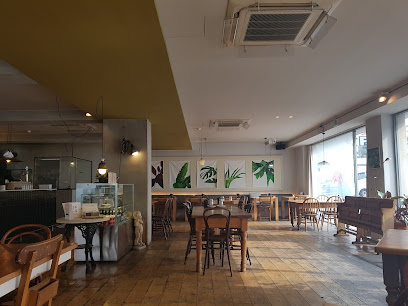
Hanok Restaurant
Savor authentic Korean flavors at Hanok Restaurant in Gwangju – where tradition meets taste in every dish.

Raj indian restaurant, Chonnam Univ. branch
Experience the rich flavors of India at Raj Indian Restaurant in Gwangju – where authentic cuisine meets warm hospitality.

First Nepal Resturant
Discover the authentic flavors of Nepalese cuisine at First Nepal Restaurant in Gwangju—an unforgettable culinary experience awaits!

Restaurant
Discover authentic Korean cuisine in Dong-gu, Gwangju - where every dish tells a story and flavors come alive.

Loft 28 - Downtown
Discover Loft 28 - Downtown in Gwangju: A culinary haven offering exquisite dishes and a vibrant atmosphere perfect for any occasion.

바보죽힐링까페
Discover tranquility at 바보죽힐링까페 in Gwangju - a serene restaurant offering delightful Korean cuisine in a calming ambiance.

Markets, malls and hidden boutiques
Gwangju Shinsegae Department Store
Discover the elegance of Gwangju Shinsegae Department Store, your ultimate beauty and shopping destination in Gwangju, South Korea.

Lotte Department Store, Gwangju Branch
Discover the best of shopping, dining, and cultural experiences at the Lotte Department Store in Gwangju, a vibrant hub for tourists.

Gwangju Yangdong Market
Discover the heart of Gwangju at Yangdong Market, where vibrant street food and local crafts await every traveler.

Gwangju Outlet
Discover unbeatable deals and enjoy a fantastic shopping experience at Gwangju Outlet, the ultimate outlet mall in South Korea.

Gwangju Art Street
Discover the vibrant artistic culture of Gwangju Art Street, a must-visit destination where creativity and local charm flourish.

Beautiful Store Gwangju Branch
Discover unique second-hand treasures at Beautiful Store Gwangju Branch, where sustainability meets style in an unforgettable shopping experience.

Shinsegae Department Store - Gwangju Branch
Discover a shopping and dining paradise at Shinsegae Department Store - Gwangju, where luxury meets local culture in a vibrant retail experience.

Gucci - Lotte Gwangju Department Store
Experience luxury shopping at Gucci in Gwangju's Lotte Department Store, where elegance and style converge in a premium retail environment.

인스토리
Explore the essence of Gwangju through its unique uniform store, 인스토리, where tradition meets modern work attire.

Montblanc Boutique Lotte Gwangju
Explore luxury at Montblanc Boutique Lotte Gwangju, home to exquisite watches, fine pens, and premium leather goods for the discerning traveler.

Essential bars & hidden hideouts
In The Grove Jazz Bar
Discover the vibrant jazz scene at In The Grove Jazz Bar, Gwangju's premier destination for live music and a lively nightlife experience.

Amble
Discover Amble, a vibrant bar in Gwangju's Dong-gu, where local flavors meet a lively atmosphere for an unforgettable night out.
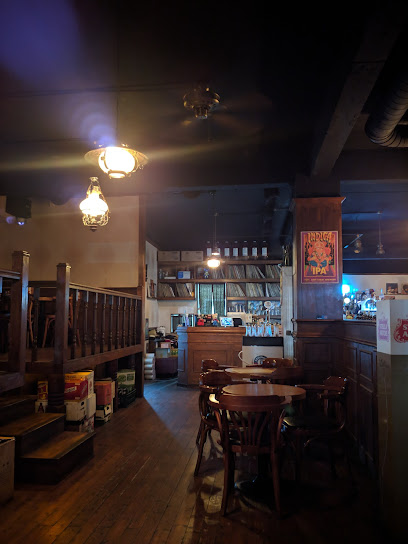
DM Lounge
Discover DM Lounge in Gwangju: Where exquisite cocktails meet vibrant DJ nights in an inviting atmosphere.

NIRVANA (너바나)
Experience vibrant nightlife at Nirvana in Gwangju, a bar offering great drinks, lively trivia nights, and a welcoming atmosphere for all.
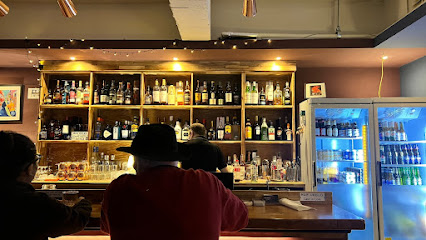
후스HOOS
Discover the heart of Gwangju's nightlife at 후스HOOS, where great drinks and a lively atmosphere await you.

원스인어블루문
Discover the vibrant jazz scene at 원스인어블루문, a cozy club in Gwangju that offers unforgettable live music experiences.
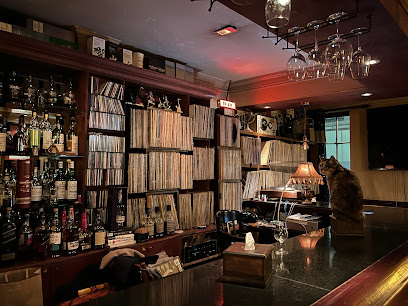
Yeokjeon Halmeoni Beer
Experience the lively atmosphere and local brews at Yeokjeon Halmeoni Beer in Gwangju, a must-visit bar for every traveler.

비어스탑
Discover the vibrant nightlife at 비어스탑, Gwangju's favorite bar for local brews and a welcoming atmosphere.

Krim lounge
Experience Gwangju's nightlife at Krim Lounge, a vibrant cocktail bar celebrating inclusivity with exquisite drinks and an inviting atmosphere.

일일일맥
Discover the vibrant nightlife of Dong-gu at 일일일맥, a bar that offers a warm atmosphere and a great selection of drinks.
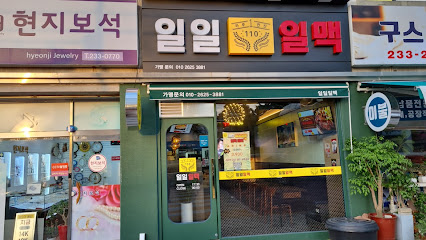
Local Phrases
-
- Hello안녕하세요
[annyeonghaseyo] - Goodbye안녕히 가세요
[annyeonghi gaseyo] - Yes네
[ne] - No아니요
[aniyo] - Please/You're welcome부탁드립니다/천만에요
[butakdeurimnida/cheonmaneyo] - Thank you감사합니다
[gamsahamnida] - Excuse me/Sorry죄송합니다
[joesonghamnida] - How are you?어떻게 지내세요?
[eotteoke jinaeseyo?] - Fine. And you?잘 지내요. 그리고 당신은요?
[jal jinaeyo. geurigo dangsineunyo?] - Do you speak English?영어 할 줄 아세요?
[yeongeo hal jul aseyo?] - I don't understand이해하지 못해요
[ihaehaji mothaeyo]
- Hello안녕하세요
-
- I'd like to see the menu, please메뉴를 보고 싶어요
[menyureul bogo sipeoyo] - I don't eat meat고기를 먹지 않아요
[gogireul meokji anayo] - Cheers!건배!
[geonbae!] - I would like to pay, please계산하고 싶어요
[gyesanhago sipeoyo]
- I'd like to see the menu, please메뉴를 보고 싶어요
-
- Help!도와주세요!
[dowajuseyo!] - Go away!가세요!
[gaseyo!] - Call the Police!경찰을 불러주세요!
[gyeongchareul bulleojuseyo!] - Call a doctor!의사를 불러주세요!
[uisareul bulleojuseyo!] - I'm lost길을 잃었어요
[gireul ilheosseoyo] - I'm ill아픈데요
[apeundeyo]
- Help!도와주세요!
-
- I'd like to buy...사고 싶어요...
[sago sipeoyo...] - I'm just looking둘러보고 있어요
[dulleobogo isseoyo] - How much is it?얼마에요?
[eolmaeyo?] - That's too expensive너무 비싸요
[neomu bissayo] - Can you lower the price?가격을 내릴 수 있나요?
[gageogeul naeril su innayo?]
- I'd like to buy...사고 싶어요...
-
- What time is it?지금 몇 시에요?
[jigeum myeot sieyo?] - It's one o'clock한 시에요
[han sieyo] - Half past (10)십 시 반
[sip si ban] - Morning아침
[achim] - Afternoon오후
[ohu] - Evening저녁
[jeonyeok] - Yesterday어제
[eoje] - Today오늘
[oneul] - Tomorrow내일
[naeil] - 1하나
[hana] - 2둘
[dul] - 3셋
[set] - 4넷
[net] - 5다섯
[daseot] - 6여섯
[yeoseot] - 7일곱
[ilgob] - 8여덟
[yeodeol] - 9아홉
[ahop] - 10열
[yeol]
- What time is it?지금 몇 시에요?
-
- Where's a/the...?...이 어디에 있어요?
[...i eodie isseoyo?] - What's the address?주소가 뭐에요?
[jusoga mwoeyo?] - Can you show me (on the map)?(지도로) 보여 줄 수 있나요?
[(jido-ro) boyeo jul su innayo?] - When's the next (bus)?다음 (버스) 언제와요?
[daeum (beoseu) eonjewayo?] - A ticket (to ....)표 하나 주세요 (...으로)
[pyo hana juseyo (...euro)]
- Where's a/the...?...이 어디에 있어요?
History of Dong-gu
-
Dong-gu, one of the oldest districts of Gwangju, has deep historical roots that trace back to the Three Kingdoms period (57 BC - 668 AD). Historically known as the administrative center of the region, it played a pivotal role in trade and governance. The area's strategic location allowed it to flourish as a hub for economic and cultural exchange between the southern provinces of Korea.
-
Dong-gu is internationally recognized for its significant role during the Gwangju Uprising in May 1980. This crucial event in South Korean history was a pro-democracy movement against the military dictatorship of Chun Doo-hwan. The protests, which started in Dong-gu, escalated over several days, leading to a brutal crackdown by government forces. The uprising is remembered for its high casualty rate and the indomitable spirit of Gwangju's citizens, which continues to influence South Korea's democratic development.
-
In recent years, Dong-gu has become a center for cultural revival and artistic expression. The district has embraced its historical legacy by fostering art and cultural festivals, such as the Gwangju Biennale, which showcases contemporary art and engages with social issues. This cultural renaissance has not only revitalized the neighborhood but also attracted artists and tourists, highlighting Dong-gu's commitment to preserving its heritage while promoting innovation.
-
The May 18 Memorial Park, located in Dong-gu, serves as a poignant tribute to the victims of the Gwangju Uprising. Established to honor those who lost their lives, the park features sculptures, memorials, and an exhibition hall that educates visitors about the events of May 1980. The site stands as a testament to the resilience of the Gwangju people and their ongoing struggle for democracy and human rights.
-
Following the Gwangju Uprising, Dong-gu underwent significant urbanization and economic development. The establishment of various educational institutions, including Chonnam National University, and the growth of local businesses have transformed the district into a vibrant urban center. This growth has fostered a diverse community, blending traditional Korean culture with modern urban life, making Dong-gu a dynamic area within Gwangju.
Dong-gu Essentials
-
Dong-gu is easily accessible from other neighborhoods in Gwangju. The Gwangju Metropolitan City has a comprehensive public transportation system. You can reach Dong-gu via the Gwangju Subway Line 1, which has several stations in the area. Buses also run frequently from other parts of the city, with major bus terminals located at Gwangju Bus Terminal and U-Square. Taxis are readily available and can provide direct transport to Dong-gu.
-
Dong-gu is well-connected by public transportation, including buses and the subway. The subway system is efficient and affordable, with several stations serving the district. Local buses cover more remote areas. Bicycles can be rented at various points throughout the city, allowing for a more leisurely exploration of Dong-gu's parks and riverbanks. Walking is also a great way to experience the neighborhood's local culture and attractions.
-
Dong-gu is considered a safe area for tourists, but like any urban neighborhood, it is wise to take precautions. Avoid poorly lit areas at night and be cautious of your belongings in crowded places. While major tourist spots are generally safe, some areas may have higher incidents of petty crime. It is advisable to stay vigilant, especially in unfamiliar surroundings.
-
In case of an emergency, dial 112 for police assistance or 119 for fire and medical emergencies. Gwangju has several hospitals and clinics, with emergency services available around the clock. It is advisable to have travel insurance that covers medical emergencies. Local pharmacies are also available for minor health needs.
-
Fashion: Do dress modestly, particularly when visiting temples or cultural sites. Avoid overly casual or revealing attire. Religion: Do be respectful of local customs. When visiting temples, be quiet, and do not take photos where prohibited. Public Transport: Do give up your seat for the elderly or disabled. Don't eat or drink on public transport. Greetings: Do greet locals with a slight bow or a friendly handshake. Eating & Drinking: Do try local dishes and share food with others. Don’t refuse food offerings, as this can be seen as rude.
-
To experience Dong-gu like a local, visit the local markets for fresh produce and street food. Engage with local vendors and try traditional dishes such as 'tteokbokki' (spicy rice cakes) and 'bibimbap' (mixed rice). Attend local festivals if your visit coincides with one, as these are great opportunities to experience the culture. Learning a few basic Korean phrases can also enhance your experience and help you connect with residents.
Nearby Cities to Dong-gu
-
Things To Do in Suncheon
-
Things To Do in Mokpo
-
Things To Do in Jeonju
-
Things To Do in Daejeon
-
Things To Do in Daegu
-
Things To Do in Jeju City
-
Things To Do in Busan
-
Things To Do in Ulsan
-
Things To Do in Gyeongju
-
Things To Do in Andong
-
Things To Do in Pohang
-
Things To Do in Suwon
-
Things To Do in Incheon
-
Things To Do in Seoul
-
Things To Do in Chuncheon



